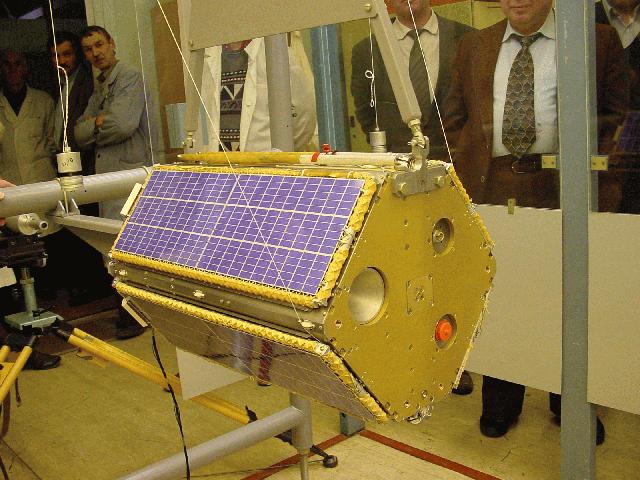

Fig.1. A microsatellite in the transport condition (the solar panels - light-blue - are packed up along the basic body of the microsatellite) on the horizontal weight compensation stand. At the left, on the tripod, we can see the laser device to mesure the horizontal movement of the microsatellite.
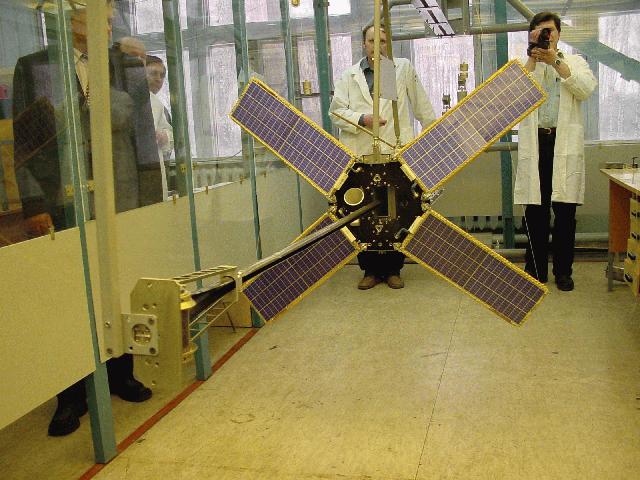
Fig.2. Test of opening the gravitational bar (from a microsatellite to the spectator), solar panels (light-blue) and radiotelemetering aerials (V-figuratively located " top " solar panels; from the right below - to the left upwards). On top flange the energetic particles collimator is seen - a part of the ACHP device.

Fig.3. The transport-and-launch co
ntainer (ТLC), inside of which the microsatellite "is packed" in the transport position (Fig.1). The three telescopic fastening units (TFU) are located (two are visible) along a lateral TLC surface for fastening TLC to the top hatch of the cargo ship "Progress".
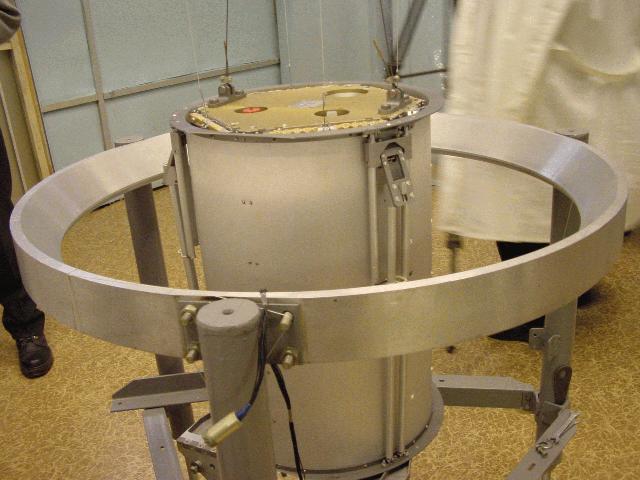
Fig.4. In figure the large ring simulates the top hatch of the cargo ship "Progress". Relatively to the Figure, "Progress" is situated at the bottom, and MSS - at the top. The cosmonaut's work with the microsatellite begins when he comes inside "Progress" (we shall remind, that " the Progress " is tightly joined with MSS) without environmental suit and removes TLC (FIG.3) from the stock.
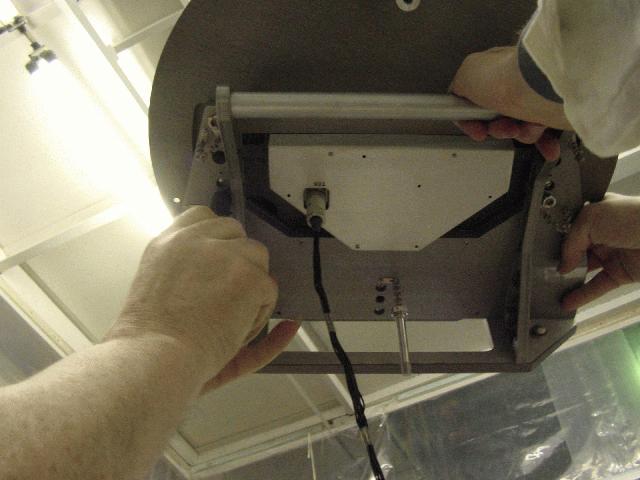
Fig.5. Being inside "Progress" cosmonaut joins the command system "Progress" and the microsatellite with a socket, to send the further launch command. For prevention of the not authorized submission of a command, the TLC has a special blocking system. Leaving from "Progress" the cosmonaut brings TLC to the top hatch.
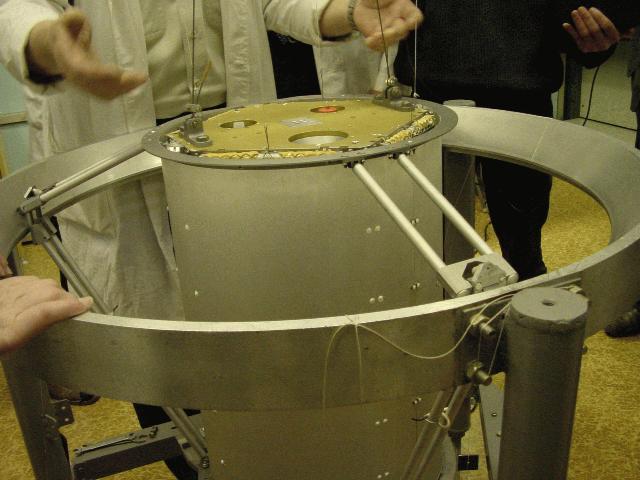
Fig.6. Moving inside MSS, the cosmonaut moves apart the three telescopic fastening units and fixes TLC on the top hatch. The cosmonaut goes inside MSS, tightly closes the sluice with " Progress ".
MSS and "Progress" are in joint flight during a period of time. Then the undock command on "Progress" moves. After the undocking, the microsatellite located on the top hatch, appears in the space vacuum.
After one day of independent flight, a procedure is made for "Progress" takes its orientation in space with the best conditions for the microsatellite launche.
The Flight Control Center sends the launch command for the microsatellite. It is made in a zone of visibility of one of School Ground Control Centers.
Then, the pyrolock initiates the two actions:- a spring pushes the microsatellite out;
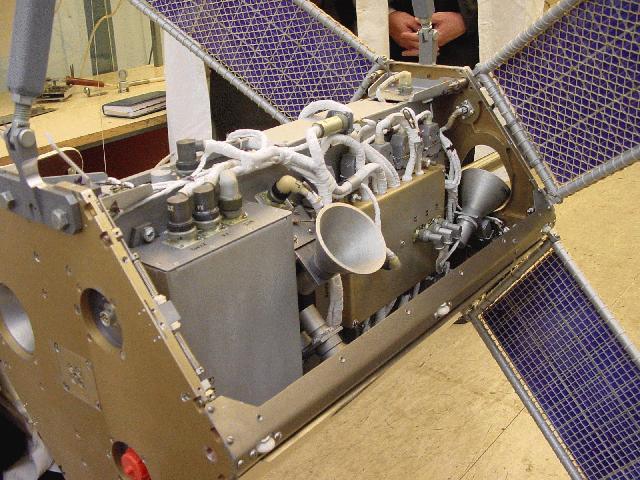
Fig.7. As soon as the microsatellite completely leaves the TLC:
- it opens solar batteries (see. Fig.2.);
- it opens aerial
- it automatically switches on all the systems of the microsatellite.